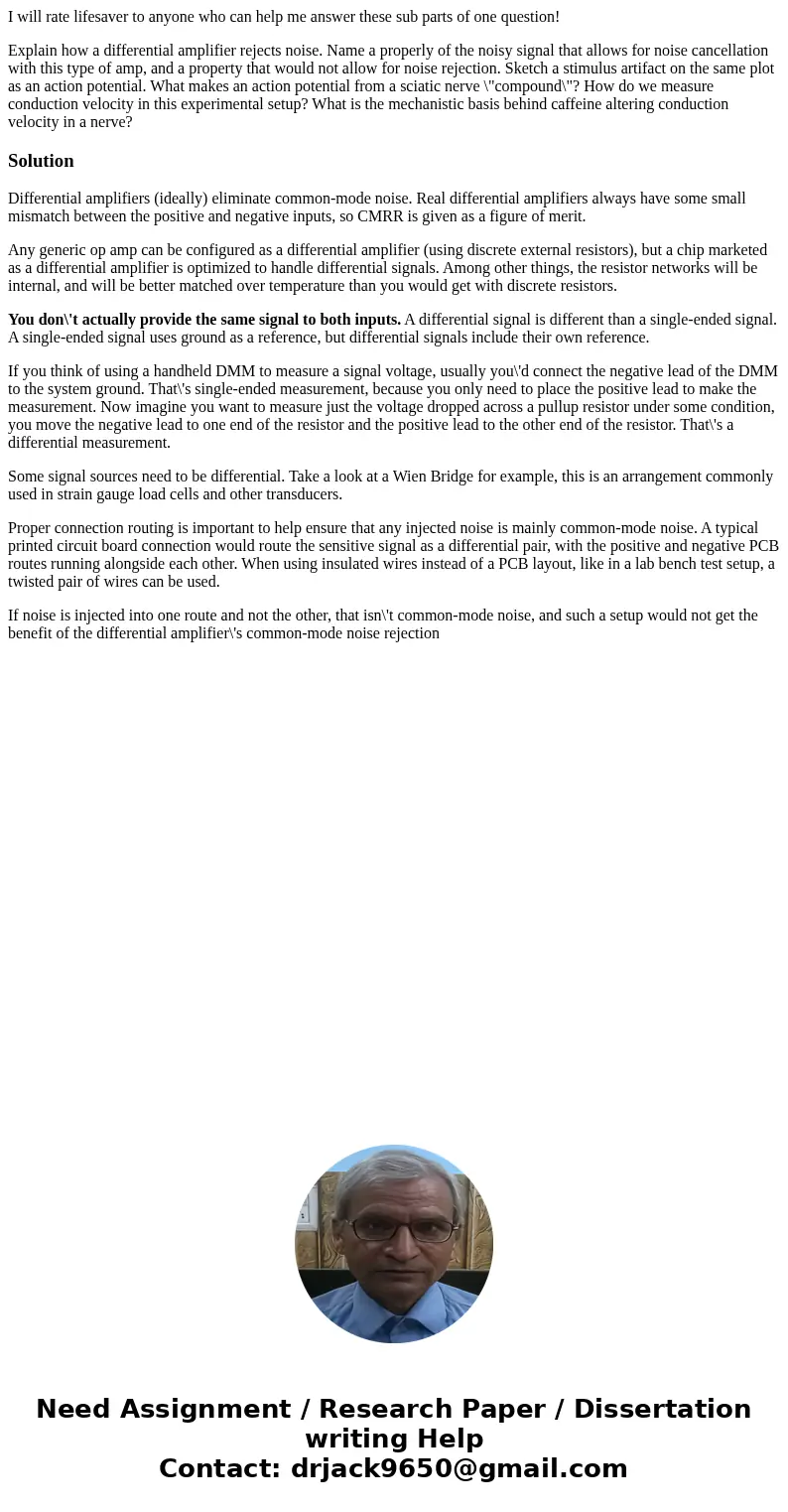I will rate lifesaver to anyone who can help me answer these
I will rate lifesaver to anyone who can help me answer these sub parts of one question!
Explain how a differential amplifier rejects noise. Name a properly of the noisy signal that allows for noise cancellation with this type of amp, and a property that would not allow for noise rejection. Sketch a stimulus artifact on the same plot as an action potential. What makes an action potential from a sciatic nerve \"compound\"? How do we measure conduction velocity in this experimental setup? What is the mechanistic basis behind caffeine altering conduction velocity in a nerve?Solution
Differential amplifiers (ideally) eliminate common-mode noise. Real differential amplifiers always have some small mismatch between the positive and negative inputs, so CMRR is given as a figure of merit.
Any generic op amp can be configured as a differential amplifier (using discrete external resistors), but a chip marketed as a differential amplifier is optimized to handle differential signals. Among other things, the resistor networks will be internal, and will be better matched over temperature than you would get with discrete resistors.
You don\'t actually provide the same signal to both inputs. A differential signal is different than a single-ended signal. A single-ended signal uses ground as a reference, but differential signals include their own reference.
If you think of using a handheld DMM to measure a signal voltage, usually you\'d connect the negative lead of the DMM to the system ground. That\'s single-ended measurement, because you only need to place the positive lead to make the measurement. Now imagine you want to measure just the voltage dropped across a pullup resistor under some condition, you move the negative lead to one end of the resistor and the positive lead to the other end of the resistor. That\'s a differential measurement.
Some signal sources need to be differential. Take a look at a Wien Bridge for example, this is an arrangement commonly used in strain gauge load cells and other transducers.
Proper connection routing is important to help ensure that any injected noise is mainly common-mode noise. A typical printed circuit board connection would route the sensitive signal as a differential pair, with the positive and negative PCB routes running alongside each other. When using insulated wires instead of a PCB layout, like in a lab bench test setup, a twisted pair of wires can be used.
If noise is injected into one route and not the other, that isn\'t common-mode noise, and such a setup would not get the benefit of the differential amplifier\'s common-mode noise rejection

 Homework Sourse
Homework Sourse